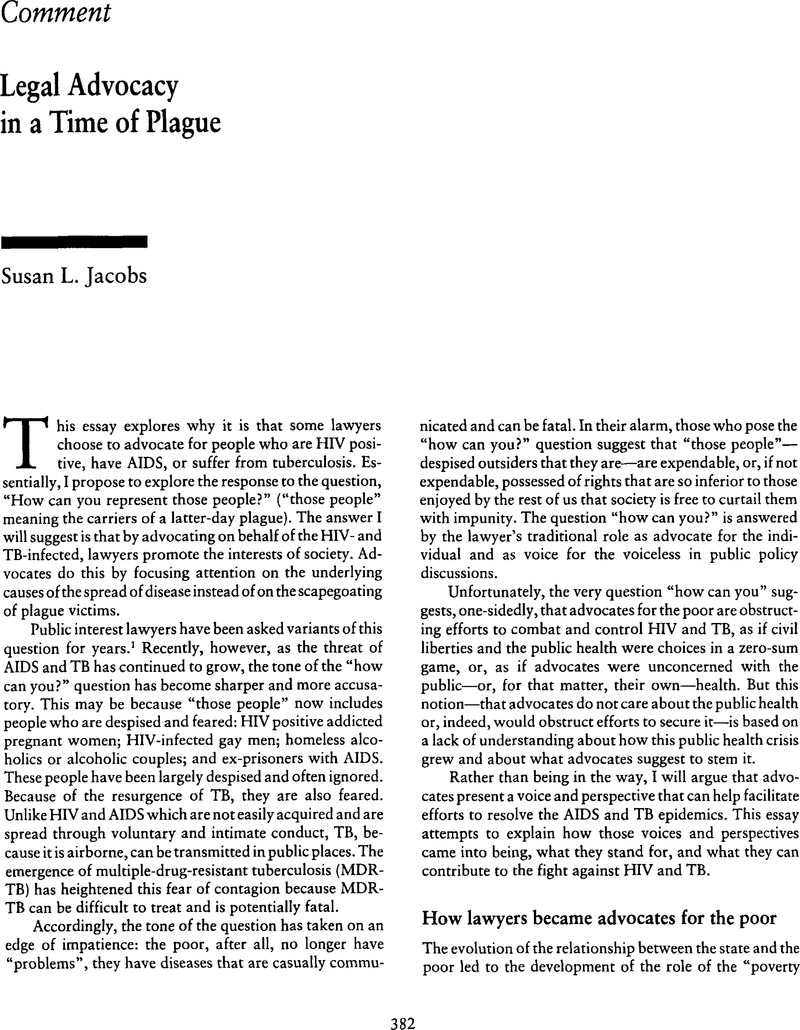Not long ago, a New York City Department of Health task force issued a draft report recommending the adoption of measures to facilitate the widescale detention of “chronically non-compliant TB patients.” New York City Department of Health, Draft Report (Spring 1992). The report asserted that it was necessary to rehabilitate certain TB patients in secure facilities. The task force proposed several possible detention sites, including “secure” drug treatment programs, nursing homes, “secure” TB shelters, and mental health facilities. The report, which was criticized extensively for focusing on containing the victim, not the disease, was retracted, to the city's credit. See also,
Mahon, et al., New York City TB Working Group, “Developing a System for TB Prevention and Care in New York City,” (September
1992) [hereinafter TB Working Group].
Google Scholar